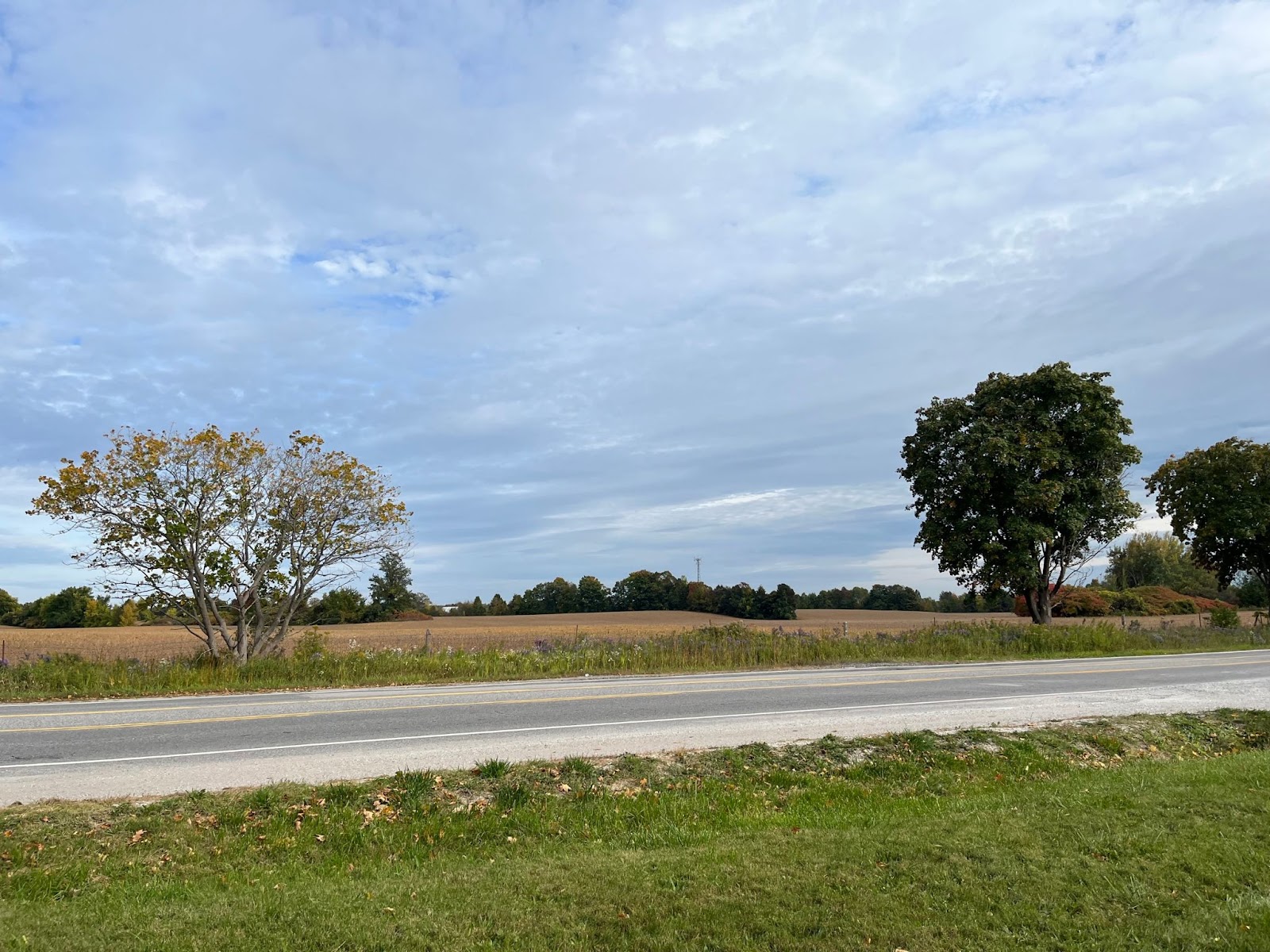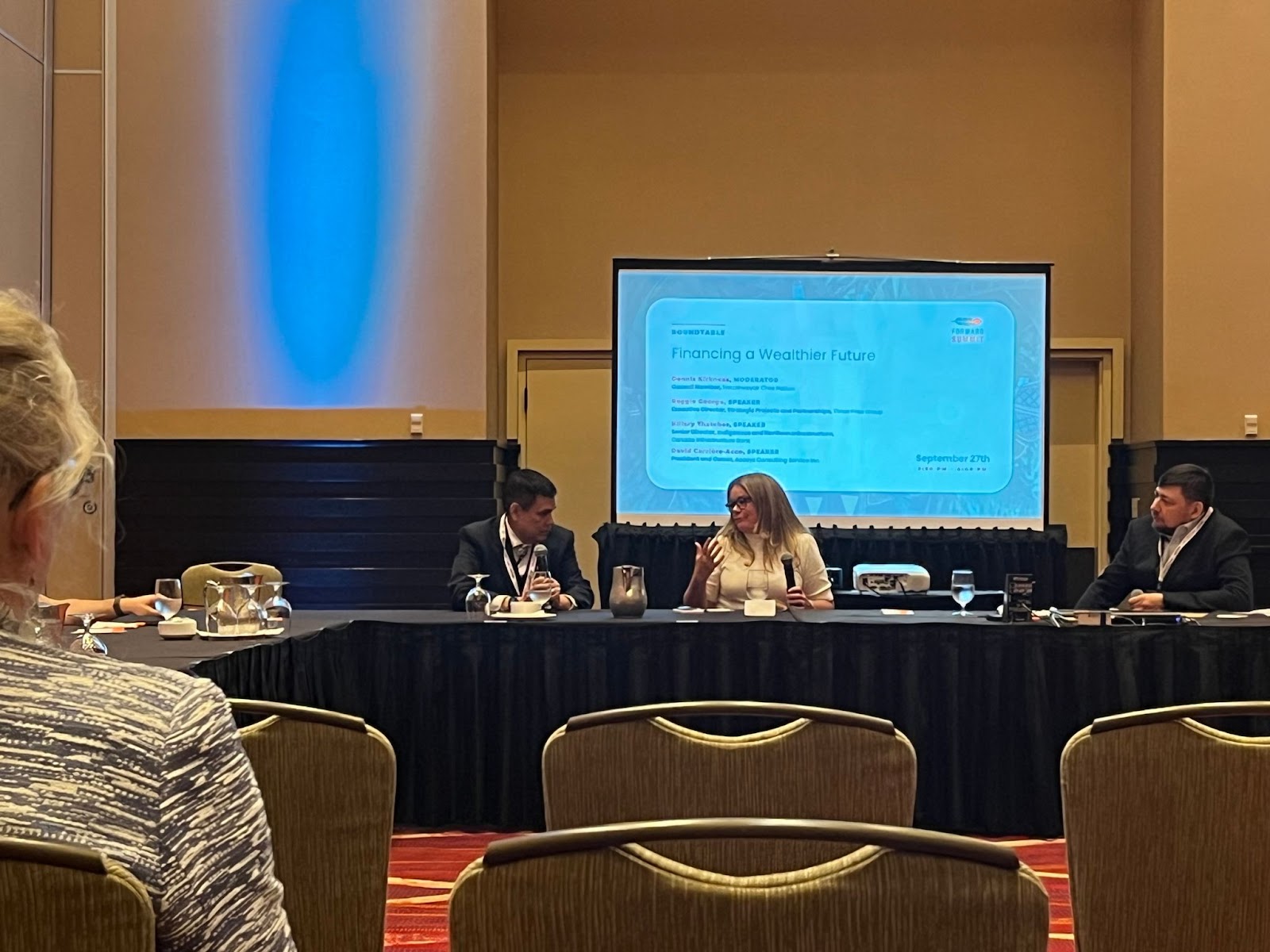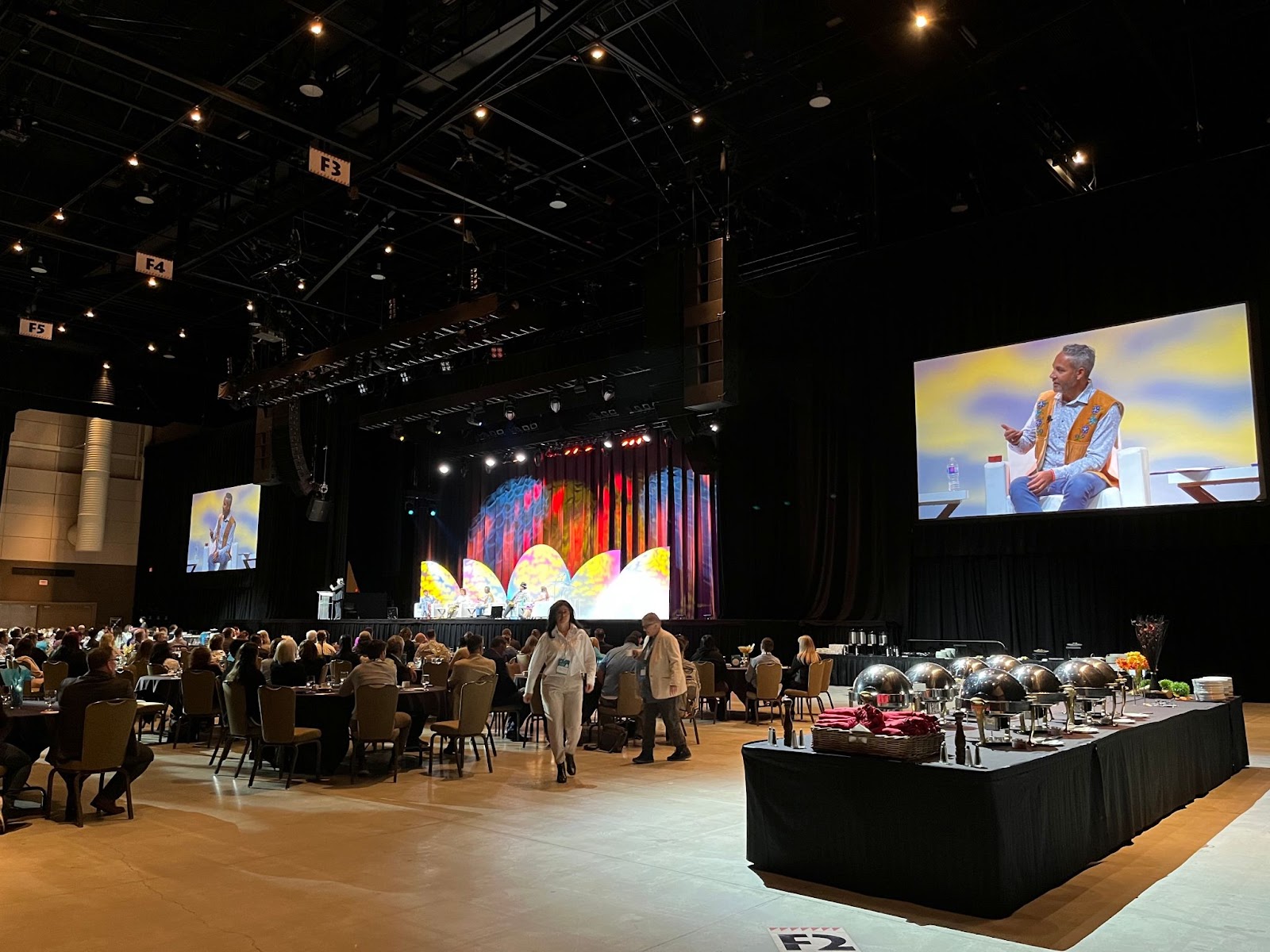I’ve spent the past couple of days immersed in the world of economic reconciliation at Forward Summit East, in beautiful Orillia. The Forward Summits (there is both an East and a West Summit) are national gatherings of Indigenous and non-Indigenous business leaders committed to building Indigenous prosperity through Truth and Reconciliation. This was the first Forward Summit East, and it was a privilege to be there and learn. This Forward Summit took place on the territory of the Chippewas of Rama First Nation, and I was grateful to be welcomed onto their land and reserve.
It’s been a whirlwind, as all conferences are, of meeting new people, learning new things, and trying to take it all in — but in honour of the National Day for Truth and Reconciliation, September 30, I spent some time reflecting on what economic reconciliation might mean to the social finance world, and, more specifically, in my work as Knowledge Lead at Tapestry.

Nothing I’ve learned is 100 percent true, all the time
There are more than 600 First Nation communities across Canada, not to mention the many Métis and Inuit communities. Across Turtle Island, more than 1,000 Indigenous languages are spoken. That’s a ton of diversity in worldview, resources, priorities, and values — something I knew on an intellectual level, but being among a group of diverse Indigenous leaders and thinkers at this conference has driven home this point.
I came to Forward Summit looking for insights on meaningfully engaging with Indigenous communities in the finance space — but I’m leaving with the reminder that there will never be (and should never be) one universal way to do this work.
Economic reconciliation should touch every part of our financial systems
Forward Summit is all about economic reconciliation, which, from my perspective, necessarily sits at the intersection between the concepts of Truth and Reconciliation and economic justice. The Truth and Reconciliation Commission’s call on corporate Canada to implement the United Nations Declaration on the Rights of Indigenous Peoples into all corporate policies and operations. Of course, there is no reconciliation without truth, and this means first acknowledging and learning about the material and/or financial dispossession of the Peoples of Turtle Island, especially through land. It’s only through embodying this historical knowledge that we can begin the process of building and maintaining mutually respectful trade relationships with Indigenous Peoples that empowers their sovereignty. Economic justice calls for a fairer economy — where all have the opportunity to succeed and thrive and it is clear that we will never establish economic justice if Indigenous Peoples economic activities are not supported, valued, and considered a key part of financial and trade systems.
From an immigrant settler’s perspective, this week has deepened my understanding of what that looks like in practice, and offered reflection on how Tapestry’s work might contribute. One key gap, I’ve learned, is access to affordable capital — the same access non-Indigenous business leaders have. And at Tapestry, we believe in affordable, patient, community-led capital for all.

How much do you (and I) know about Indigenous economics?
But before community bonds can contribute to the work of economic reconciliation, we should ask ourselves: how much do we really know about the existing economic systems and financial tools in Indigenous communities? Are we assuming our economic tools will be useful and relevant? Are we assuming that all Indigenous businesses (and there’s no clear legal definition of what an Indigenous business is) are by default social purpose businesses? Are we assuming that for-profit Indigenous businesses lack a social purpose?
Indigenous communities have unique histories of pre-colonisation economic systems, and for many, these values and customs still exist today. This was highlighted in the Canadian Council for Aboriginal Business’ report from 2017 on Indigenous Perspectives on Social Innovation and Finance, which highlighted the need for non-Indigenous lenders and intermediaries to improve their knowledge base on the barriers faced by Indigenous SPOs and to fill gaps in the existing research on Indigenous social finance. The CCAB identified this as a need that they could use support on. This week, I’ve reflected on how rarely the social finance community acknowledges these Indigenous economies, and the deep learning there is for us at Tapestry to embark on here. Nevertheless, I have hope that these are aspects that can be remedied for us to embark on true economic reconciliation!
What about the Indian Act?
And furthermore, how much do we know about colonisation’s impact on how Indigenous communities’ are able to participate in economies? Many speakers and people I’ve met this week have asked this question of settler-led organisations looking to work with Indigenous communities. I’ll give you an example: the Indian Act prohibits many Indigenous communities on reserve (there are urban Indigenous communities and 120 urban reserves) from using their property as collateral on a loan — the very thing many of our non-Indigenous clients working on affordable housing projects do. That’s just one way the Indian Act interacts with our financial systems; there are countless others, and it’s on settler social finance actors to make sure we’re informed and ready to work around these limitations (and Indigenous Peoples have been routinely doing this!).

We must move at the pace of relationships and Indigenous self-determination
We know that reciprocal, meaningful relationships are a core value to many Indigenous communities, and any work we do toward economic reconciliation must make space for building trust, connection, and reciprocity.
There were some great examples of settler-led organisations, such as HydroOne, who seemed to have gotten the relationship building right. Penny Favel from HydroOne, spoke to how her organisation rethought their equity model by building more transparent negotiating processes. And also by building relationships with Nations well in advance (think a year or two) through boots-on-the-ground research and listening. They didn’t bring a direct solution to communities, but talked and listened to what communities actually needed, all without the guarantee of a contract in hand.
A caveat here: one thing I’m reminded of this week is that some Indigenous communities (again, they’re not a monolith!) simply want access to the same economic tools settler communities have, even if they’re transactional and not based on deep, involved relationships, as long as those tools can help empower their sovereignty and self-determination. That’s important to fight for, too.
Regardless, the priorities will always be set by Indigenous leaders in economic reconciliation — and I’m ready to follow their lead.
Suzanne Faiza is the Knowledge Lead at Tapestry Community Capital.
